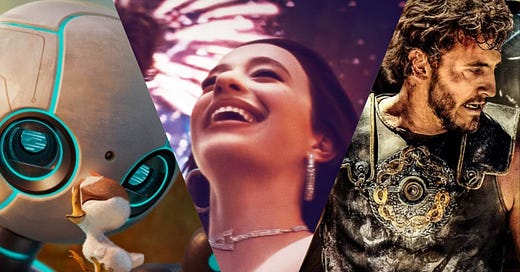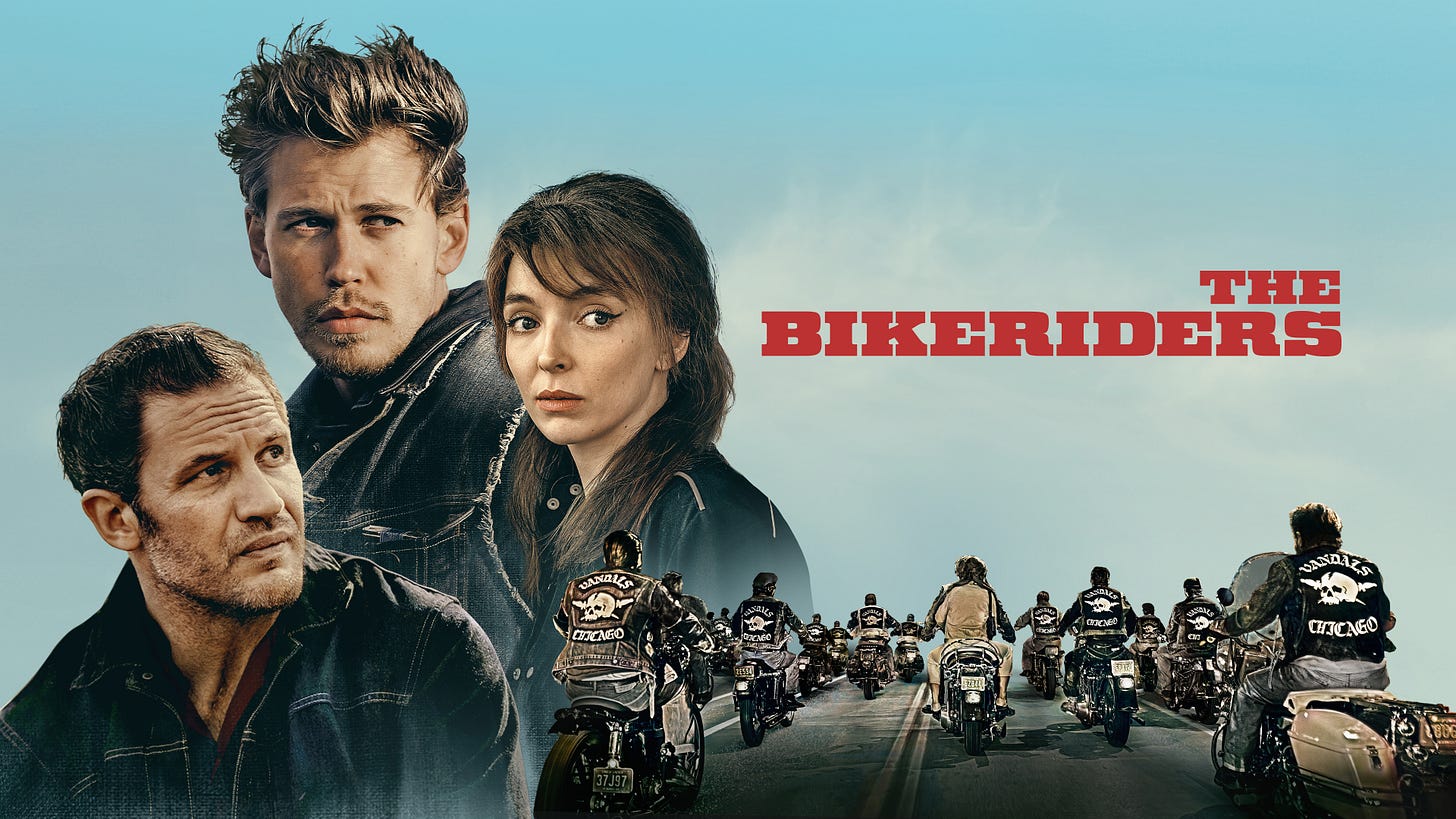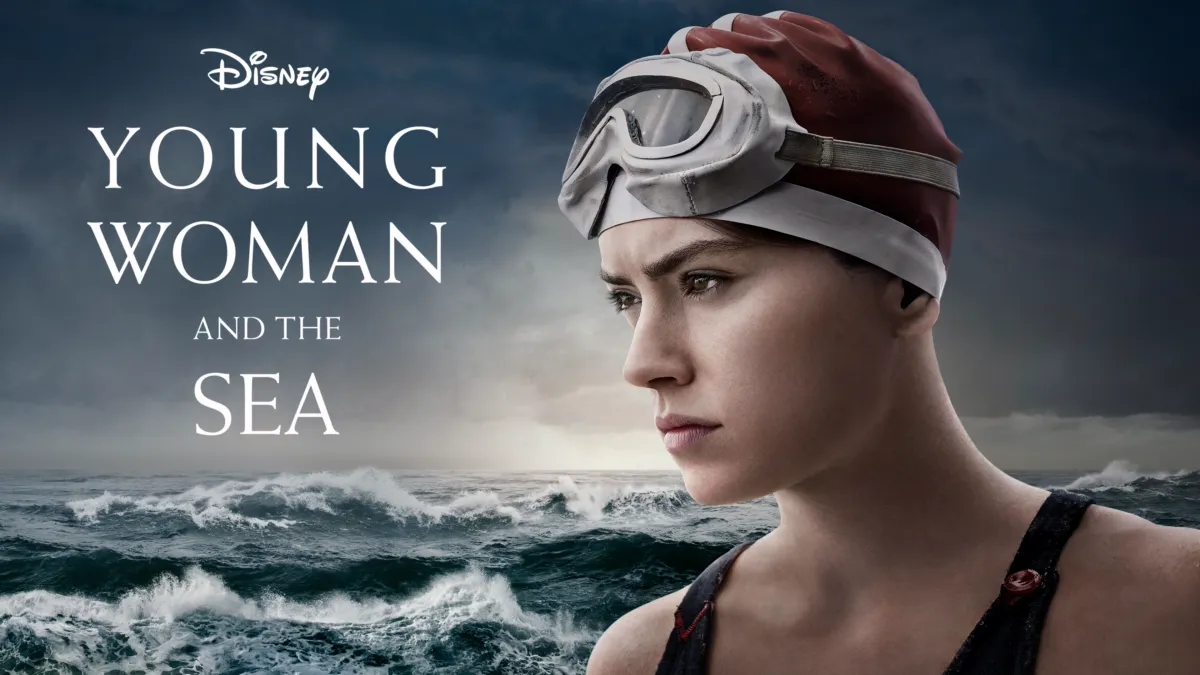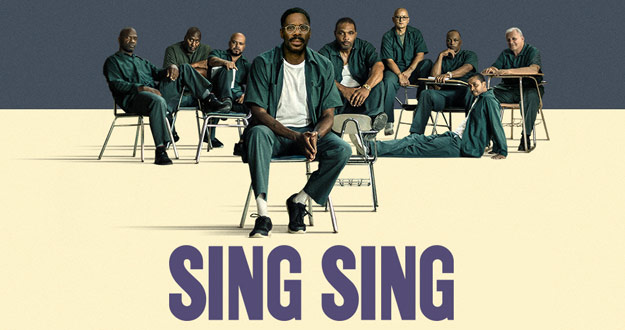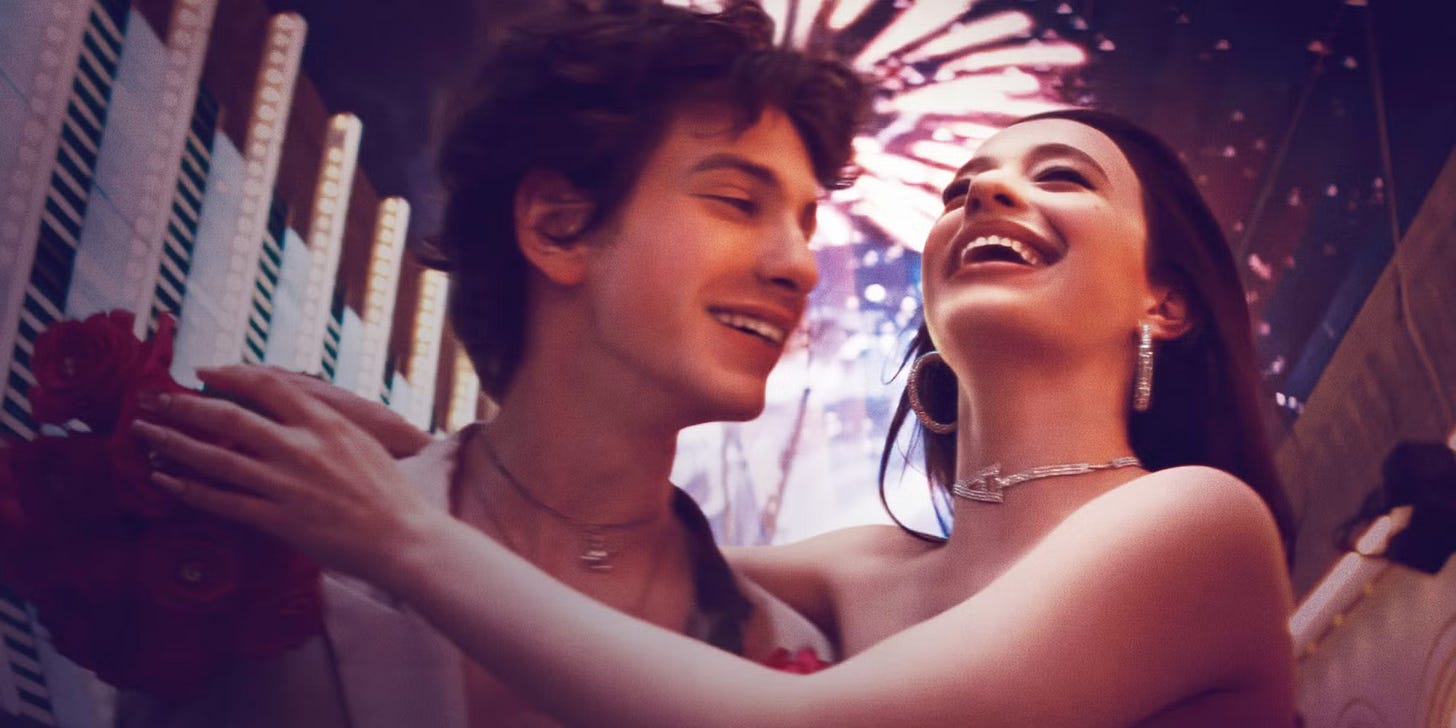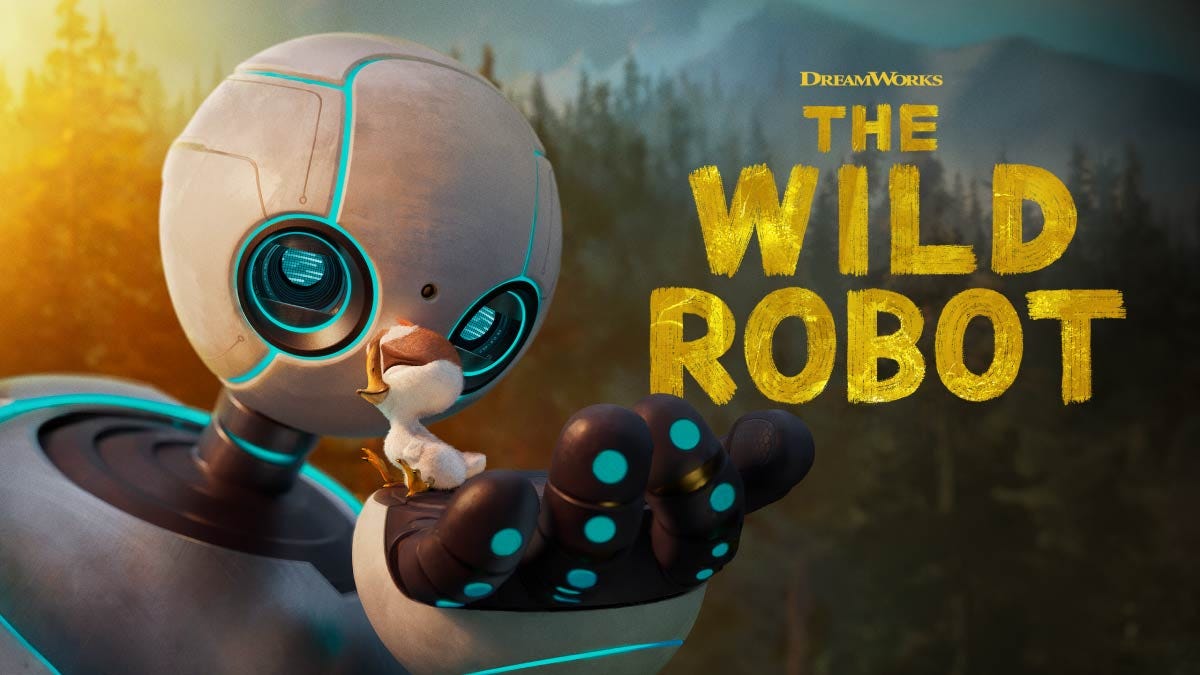Six Movies I Loved From The Back Half Of 2024
Yes, I know it's way too late to be doing a year in review post...
I’ve always found the whole concept of award shows odd.
On the one hand, I get it, it’s fun to win. Everybody likes having their hard work acknowledged, and being handed a trophy that says you did a great job can be a really nice feeling. Not to mention, all the glitz and glamour of the ceremonies can be great fun, too.
On the other hand, though, they don’t really make sense. You can’t “win” at art the same way you can win at sports. And having prizes for “Best Picture,” etc. is clearly an attempt to make art more like sports.
But the two are very different. Sports are competitions in which the winner is determined by a set of rules. There’s no debate about who wins; whoever scores the most points, goals, runs, etc. is the winner. We can debate whether a team “deserved” to win, but if they scored more than the other team, then they won. The winner is based on the cold, hard facts of the game.
It may pain me to acknowledge that the Florida Panthers won the Stanley Cup last year, but I can’t deny it. We all just have to agree on it, because they won according to the set of rules that everyone playing and watching, at least tacitly, agreed to. They won, so they got the shiny trophy. But to this day, I will tell you with absolute certainty that the “Best Picture” of 1977 was not Annie Hall, as the Academy of Motion Pictures determined, it was Star Wars.
Art is personal, and what the “Best Picture” is for me may not be the same as it is for someone else. We judge art based on different criteria, but the ultimate deciding factor is how it makes us feel. And that will be different for everyone. At best, the award should be called “Best Picture for some people”. But many more will disagree. The shiny trophy doesn’t determine that, the feelings we had watching those movies did.
That said, I don’t think the whole exercise is without value. More than the Oscars themselves, I look forward to seeing the list of nominees. That, to me, is more interesting. It’s essentially a list of movies that a bunch of people came up with that they think are pretty good. So when I’m looking for something interesting to watch, I often find myself looking to the nominees.
Will I like every movie on the list? Probably not. But it’s a starting place. And that’s how I think of the list of movies I’ve compiled below. I’m not calling them “the best of 2024,” only you can decide that for yourself. But these are some movies that I enjoyed, and I think you might too.
Note: There are some spoilers below. I tried, when possible, to talk about the movies in a way that highlighted what I liked but didn’t give away too much. But sometimes I had to delve into some key plot points. The mini-review of Gladiator II, in particular, deals with the end of the movie. Since that was the highest-grossing picture on this list I figured it was safe to talk about it in such detail since most people have seen it. But if you still really don’t want to know what happens in the movie, you probably want to skip that section.
OK, onto the list!
6. The Bikeriders
Memes about the Fast and the Furious movies have ruined talking about family and belonging in movies with vehicles that go really fast.
But where the F&F franchise is delightfully over the top and cheesy, The Bikeriders takes a more nuanced approach to community—how they form, how they help people, and how they fall apart.
The film tells the story of “The Vandals,” a fictionalized version of the Outlaws motorcycle club. We follow the club’s founder Benny and his protege Jonny as they grow the club to the point where it outgrows them, and what was once a group of bike enthusiasts who didn’t shy away from a fight, becomes an organized crime operation.
At its core, however, the film is about outcasts coming together. The members of The Vandals all feel out of place in their regular lives and find a sense of camaraderie with their fellow bike riders. There’s a respect they feel for each other, even when things get violent. Rules are adhered to and outcomes are respected, even after an all-out, knockdown brawl.
But for as much as it celebrates this form of male bonding, The Bikeriders doesn’t shy away from the negative consequences. As the film progresses and the club grows, the membership becomes increasingly violent. The respect that once existed is replaced by grudges and power plays. Whatever rules there were were thrown out the window by newer members who didn’t understand what the club was meant to be. For the founding members it was an escape, for the newcomers it’s a path to power and glory—the exact opposite of what drew people in in the first place.
The Bikeriders is a celebration and warning. At its core is a familiar theme, presented in a unique way, about the dangers of losing control of one’s creation.
5. Gladiator II
What struck me most when considering the differences between the two Gladiator movies, released twenty-four years apart, is how much more cynical the first one is.
In Gladiator, we follow Maximus as he fights to preserve the vision of Rome of his friend, the late Emperor Marcus Aurelius. He fights his way back from near death to becoming a champion in the Coliseum, winning the support of the people, only to die at the hands of the new Emperor who doesn’t share his vision. It was as if to say that you couldn’t fight the system.
In the sequel, Maximus’ son Lucius follows a similar path. Fighting his way through the Gladiator ranks, gaining allies in the Senate and the army as he goes. He reaches a similar pinnacle as his father, only this time Lucius actually unites the various factions behind the idea of a united Rome, free from tyranny and violence.
It’s a surprisingly hopeful note to end on. In a lot of ways, it’s the typical “Hollywood” ending, where the “good guys” come together to do the right thing. Of course, there’s more nuance to it, but this sort of “typical” ending actually feels subversive and unexpected because of our expectations for a Gladiator movie. We expect bad things to happen to the characters because that’s what happened last time.
When comparing the two, audiences are asked to consider which ending seems more plausible. Is it impossible to fight the system, or can people come together to enact real change? Is it hokey or inspiring?
Maybe I’m just a big sap, but as much as I enjoyed the original’s bleak ending, I like that Gladiator II asks us to envision a great society striving to be better.
4. Young Woman and the Sea
The Daisy Ridley-led Young Woman and the Sea is a classic sports movie. It’s got everything you could ask for from the genre: a protagonist facing seemingly insurmountable odds, with a support team of plucky outsiders, and every kind of obstacle in their way—jealous coaches, sexism, the literal sea, etc. Through it all, our hero overcomes the odds and wins the day. What’s not to love?
The movie tells the story of Trudy Ederle, the first woman ever to swim across the English Channel. Ridley does an excellent job portraying both Trudy’s determination and her vulnerability (though it took a moment to get used to hearing “Rey” speak with a New York accent). And she’s joined by a solid supporting cast, including Christopher Eccleston who’s very good as Trudy’s coach who is secretly working to undermine her.
Athletes often talk about all those who supported them through their journeys and Young Woman and the Sea portrays this very well. From her sister to her actually supportive coaches to the general public cheering her on, it’s clear that Trudy isn’t alone in her pursuits. They help “light her way home,” so to speak.
In sports movies, we usually know how they’re going to end—especially when they’re based on a true story. The formula is familiar, but it’s repeated so frequently because it works. Seeing someone triumph over what seems impossible never gets old. Young Woman And The Sea delivers this and more. It’s inspiring and uplifting, reminding us why we love sports, and why we love movies.
3. Sing Sing
When a movie is set in a prison, we tend to have a certain set of expectations. There will be hardship, there will be injustice, and there will be the triumph of the human spirit.
Sing Sing delivers on all those fronts while still managing to feel fresh and real. It helps that, in addition to being based on a true story, it features actual former inmates who graduated from the Rehabilitation Through the Arts Program (which the movie centres on) in supporting roles. Their performances give the whole thing a raw feeling rooted in lived experience.
Leading the cast is one of the few professional actors in the movie, Colman Domingo as Devine G. He carries much of the movies emotional and narrative weight. He conveys a sense of genuine kindness and love towards his fellow inmates but with just enough of a hint of pretentiousness that you understand the early tension between him and his rival-turned-friend Devine Eye.
The movie is very hopeful in its approach. You believe these men can and are being reformed through their experiences in the RTA program. Very quickly, the audience is on their side and you see just how powerful and life-changing this sort of opportunity can be. It shows how people can change if they want to and are allowed to do so.
At the same time, it doesn’t shy away from the realities of what life in prison is, as well as the injustices baked into the justice system.
It’s a movie that runs the full gambit of emotions. You laugh, you cry, you feel despair, and you feel hope.
2. Anora
Slapstick is an underappreciated form of comedy. Physical comedy in general has taken a backseat to comedy that exists more on the page. This is not to take away from the talent it takes to write and tell a joke well or say a line in the way that elicits the most laughs. But the sort of physical comedy of Charlie Chaplin and Buster Keaton hasn’t been in style for a long time.
Maybe Anora will change that.
The Sean Baker-directed movie has received a lot of praise since its release, and deservedly so, for the way it grapples with themes of power, love, and sex. It’s also funny.
Really funny.
I don’t know what I expected when I sat down for Anora, but it wasn’t to be gasping for breath after laughing so hard at an extended sequence where three Russian tough guys try to tie down the main character after her son-of-an-oligarch husband(?) just ran away. The number of twists, misunderstandings, and moments of shock and awe in this sequence alone was worth the price of admission. I know they don’t give out Oscars for “Best Twenty Minutes of a Movie,” but if they did this one would have my vote.
The rest of the movie maybe doesn’t live up to the middle sequence, but it’s still an excellent journey. Baker has a lot of sympathy for the people caught up in the games of the powerful. We get great joy from seeing Anora fight back, even if she is stymied at every turn. But even the people trying to keep her away from the man she supposedly loves are treated fairly by the camera. We may not like them, but Baker makes it clear that they are stuck in these cycles, the same as Anora.
What makes Anora poignant is that she thinks she’s going to escape this game (one that we all are stuck in, to one degree or another). But everything and everyone seems to conspire to keep her exactly where she is.
1. The Wild Robot
Robots having human emotions is not a new concept to science fiction fans. Some of the best and most beloved stories explore the theme of humanity through the lens of robots.
The Wild Robot presents a fresh take on these questions by removing humans from the picture entirely. Instead, we follow ROZZUM Unit 7134, aka Roz, and her relationship with the animals who live on the island she washes up on. Through a series of accidents—and a top-tier chase scene—Roz winds up becoming the protector of a young goose named Brightbill. Roz, along with Fink the fox, raises Brightbill and tries to make sure he is ready to fly when the winter migration comes.
Naturally, there are complications, and the social dynamics of the island are upended by Roz’s presence and her choices. Ultimately, however, she inspires the animals to come together in their times of need.
Though it’s a kid’s movie, the themes of The Wild Robot feel especially relevant in this moment. In this age of climate change and AI, both of which are present to varying degrees in the story, the movie stresses that the only way to succeed as a society is to work together. The animals rally around Roz, Fink, and Brightbill, all outcasts in their own ways, to unite and survive. The trio inspires those around them to choose to look past their differences and prior assumptions for the betterment of their community.
As I said, it’s a familiar story but it’s beautifully told. The relationships between Roz, Britghtbill, and Fink are so human you almost forget that they aren’t. And the visuals are excellent, I’m always amazed at how much emotion animators can get out of “emotionless” robot faces. You can feel Roz’s joy, pain, and determination throughout the movie. And there are some gorgeous sequences with the animals on the island. I know 3D isn’t in vogue right now, but if you have the opportunity to see The Wild Robot this way it absolutely enhances the already excellent experience.
Kid’s stories often have of tapping into something simple that everyone could benefit from remembering. The Wild Robot’s theme of coming together to survive is no exception.
…
Art is often said to be a reflection of its time. And looking at the movies that resonated with me last year, a clear theme emerges: community.
Whether it’s the joy of finding a community or the pain of losing one, the movies of 2024 seem to reflect our desire to come together.
The Bikeriders shows people with similar interests finding each other and the love that can be born out of that (as well as how devastating it can be when a community falls apart). It may not be the healthiest community, but we see just how meaningful it is to Benny, Jonny, and all the original members of The Vandals.
Gladiator II is able to eschew the cynicism of its predecessor because people are looking for the sort of coming together that Lucius inspires. When so many of our so-called leaders appear to be intent on sewing division, the idea of someone offering a different vision is very appealing.
Young Woman and the Sea invites the world to come together in support of something positive. The news is often so full of terrible things, and it’s rare when something genuinely exciting and hopeful can overwhelm the media’s inherent bias toward the negative. Trudy’s story did that, something that is hammered in the final moments as people come together to help her get across the finish line.
Sing Sing takes us inside one of the most hopeless places and shows how people can find light in such darkness. The inmates of the RTA program face their harsh reality every day but, as one of them points out, the program (and the community it created) allows them to imagine a different life. It gives them hope and comfort, even if it’s only temporary.
Ani’s journey in Anora explores the pain of losing community. Through her engagement to Vanya, she thought she was going to escape the cycles she was trapped in and create a new family and community with her husband. So when her imagined, hopeful future is ripped away from her the loss is devastating.
The Wild Robot, being a kids’ movie, is the most on the nose with this theme. There is a whole sequence in the middle of the movie where Roz and Fink gather all the animals together to help them survive a winter storm. The animals don’t trust each other at first, their experiences over the years in the forest make them weary of relying on each other. But soon they realize that the only way they are going to survive the winter is if they put the past aside and work together.
It makes sense that our movies would reflect this feeling. Many of our traditional communities are vanishing with technology and “social” media taking their place.
Covid forced us to become more isolated than we already were. And our growing addictions to our smartphones were already leading us to a pretty isolated place long before the virus hit. Not to mention that our politics seems intent on dividing us, as those in power seek to find groups to use as scapegoats so that people fight with each other instead of looking at what is actually wrong.
What the movies from this year suggest is that we want to come together again. We want to stop being so isolated and divided and work together. We just haven’t figured out how.
Maybe that should be our resolution for 2025.
You can check out my list of movies I loved from the first half of 2024 here.
